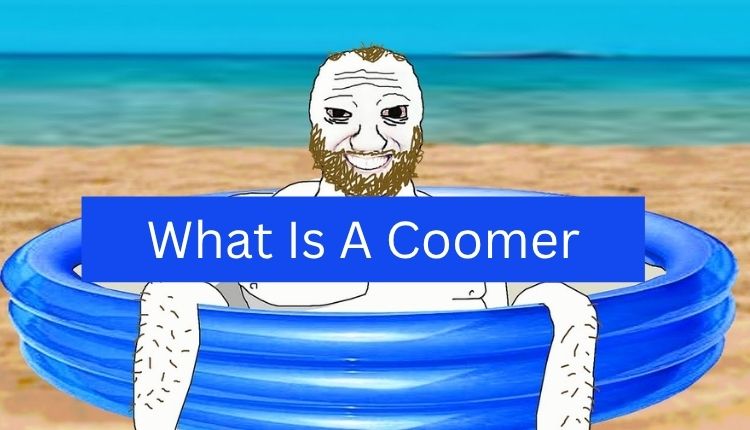One such term that has received large traction online is “what is a coomer”. This phrase, frequently used in memes and internet discussions, represents a particular stereotype that blends humour, critique, and observation on virtual-age conduct. Understanding what a “Coomer” is calls for delving into internet subcultures and the societal perceptions that fuel the term’s usage.
- Origin of the Term “What Is a Coomer”
- Defining What Is A Coomer
- Cultural Significance and Memetic Spread
- Psychological and Social Implications
- Criticism and Controversy Around the Term
- Transformation from Coomer to Self-Improvement Narratives
- The Future of the “What Is A Coomer” Archetype
- Conclusion
Origin of the Term “What Is a Coomer”
The time period “what is a coomer” emerged around 2019 on online forums, which included 4chan and Reddit. It originated from a crude onomatopoeic reference to male release, merged with stereotypical imagery of someone fed on by using compulsive conduct. The maximum iconic illustration of a Coomer is the cool animated film: a balding guy with greasy hair.
Defining What Is A Coomer
In this context, the Coomer isn’t simply a person who consumes grown-up media; rather, it’s a person who does so compulsively and without balance.
The stereotype paints the Coomer as isolated, socially awkward, and disengaged from fact. He is portrayed as someone who prioritises instantaneous gratification over private growth, health, or relationships. While exaggerated, the picture serves as a cultural critique of internet overuse, addiction, and the ease of access to specific clothes within the digital age.
Cultural Significance and Memetic Spread
As with many net-born terms, “what is a coomer” unfolded quickly through the meme way of life. The time period became broadly used on Twitter, YouTube, TikTok, and imageboards, frequently acting in films or posts mocking immoderate consumption. The meme resonated particularly with Gen Z and Millennial internet users who’ve grown up in hyperconnected surroundings with immediate access to any shape of digital enjoyment.
The Coomer additionally stimulated a lot of spin-off memes, including comparisons with “Chads” (some other internet archetype representing idealised masculinity and self-belief), in addition to references to self-development. In this narrative, customers might describe their adventure from “Coomer” to “Doomer” to “Bloomer”, reflecting distinctive stages of private awareness and change.
What makes the Coomer meme effective is its dual nature: it’s both a comedic jab and a subtle take-heed call. While it mocks, it additionally holds a mirror to the darker facet of online habits and private outlook.
Psychological and Social Implications
Beyond memes and jokes, the what is a coomer idea faucets into actual mental and social concerns. Excessive use of personal content can be related to troubles, including anxiety, despair, low self-esteem, and social withdrawal. The meme displays growing discourse about virtual dependency and the consequences of overexposure to artificial gratification.
Coomer conduct might also result from or result in dopamine overstimulation, a circumstance in which the mind will become desensitised to delight due to common, excessive stimuli. This can affect motivation, focus, and emotional regulation. While the meme simplifies these troubles, it stems from legitimate issues about digital health and well-being.
Socially, being categorised as a Coomer contains stigma. It’s a signal of failing to fulfill the expectancies of self-control and productivity in an international community that more and more values hustle, self-development, and image. The meme critiques not only the simplest non-public habits but also broader social pressures and contradictions: media-wealthy society that simultaneously shames people for overindulging in the very content it promotes.
Criticism and Controversy Around the Term
Critics argue that it promotes toxic masculinity by using mocking vulnerability, mental health struggles, or dependence in guys. It frequently frames the issue in binary terms—’sturdy’ as opposed to ‘vulnerable’ and ‘alpha’ versus ‘beta’—leaving little room for nuanced knowledge.
Furthermore, some see it as a part of an incel-adjacent lifestyle that expresses hostility or cynicism towards women, relationships, and present-day courting. While no longer inherently misogynistic, the meme’s usage can, on occasion, overlap with forums and ideologies that devalue empathy and foster resentment.
There is also a subject that the meme trivialises the complexity of dependency, an identified behavioural health difficulty. Turning it right into a meme may additionally discourage people in search of help or having open conversations about their struggles, as an alternative to pushing them into shame and isolation.
Transformation from Coomer to Self-Improvement Narratives
These companies use the meme as a motivational tool to encourage users to “defeat their inner Coomer” through abstaining from grown-up content, cultivating a field, and pursuing a healthier existence. The narrative of transformation from Coomer to a more delicate model of oneself has come to be a popular theme in certain corners of the internet.
It reflects a broader cultural interest in strength of will, private corporation, and mental clarity in a world packed with distractions and immediate gratification.
While not all of those communities are free from problematic views, the positive reinterpretation of the Coomer meme suggests its versatility as an image. For some, it’s a cautionary tale; for others, it’s a springboard for trade.
The Future of the “What Is A Coomer” Archetype
Like most internet trends, the relevance of the Coomer meme will possibly fade through the years or evolve into new bureaucracy. However, its cultural imprint has already become part of the larger lexicon of internet psychology. Whether used as an insult, a funny story, or a call to action, the term captures a photograph of ways current digital life shapes and, every now and then, distorts human behavior.
As society continues to grapple with the implications of virtual residing, addiction, and emotional health, memes like Coomer act as a reflection and statement. They permit customers to process complicated issues via satire, albeit occasionally imperfectly.
What started out as a crude shaggy dog story has turned out to be part of a broader communique about era, satisfaction, and the demanding situations of navigating contemporary identity in an always-connected globe.
Conclusion
While it may be arguable or even dangerous in a few contexts, it additionally opens the door to essential conversations about self-cognisance, digital habits, and the path to private development. Understanding what a Coomer is entails more than giggling at a stereotype—it calls for inspecting the situations that gave upward thrust to it and the ways it displays the complexities of our online lives.





